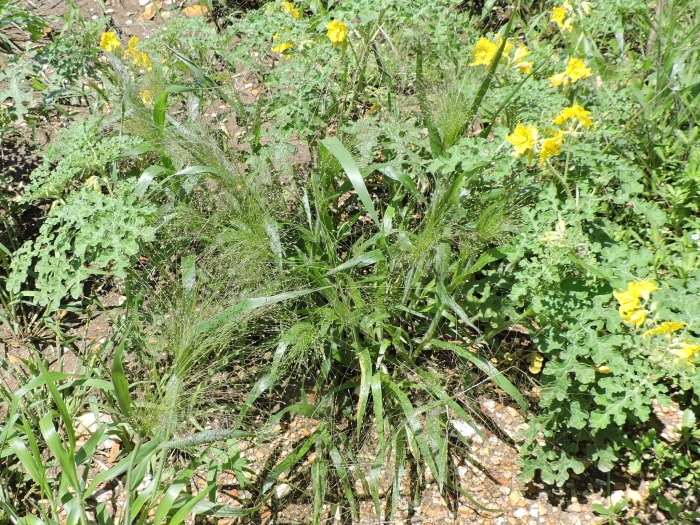Witchgrass
(Panicum capillare)
Witchgrass (Panicum capillare)
/
/

Sam Kieschnick
CC BY 4.0















































Estimated Native Range
Summary
Witchgrass is not commonly cultivated for ornamental purposes but may be used in restoration projects or as a cover crop due to its rapid growth and ability to thrive in poor soils. It is valued for its adaptability to a range of light conditions, from full sun to part shade, and its tolerance of various water regimes and soil types with slow, medium, or fast drainage. However, it can become a nuisance in gardens and agricultural settings due to its vigorous self-seeding and potential to outcompete other plants. Gardeners should be aware of its potential to become weedy and manage it accordingly.CC BY-SA 4.0
Plant Description
- Plant Type: Grass
- Height: 0.8-1.5 feet
- Width: 0.427-0.8 feet
- Growth Rate: Moderate
- Flower Color: N/A
- Flowering Season: Summer, Fall
- Leaf Retention:
Growth Requirements
- Sun: Full Sun, Part Shade
- Water: Low, Medium
- Drainage: Fast, Medium, Slow
Common Uses
Bird Garden, Butterfly Garden, Deer Resistant, Drought Tolerant, Edible*Disclaimer: Easyscape's listed plant edibility is for informational use. Always verify the safety and proper identification of any plant before consumption., Low Maintenance, Rabbit Resistant
Natural Habitat
Open fields, roadsides, agricultural land, and disturbed areas
Other Names
Common Names: Witch Grass , Common Panicgrass , Common Witchgrass , Hårfin Hirse , Haarästige Hirse , Hapsihirssi , Millet Capillaire , Panic Capillaire , Heksehirse , Draadgierst
Scientific Names: Panicum capillare , Panicum barbipulvinatum , Panicum capillare var. brevifolium , Panicum riparium , Panicum capillare var. occidentale , Panicum capillare subsp. capillare , Panicum capillare subsp. barbipulvinatum , Panicum capillare var. barbipulvinatum , Panicum capillare var. agreste , Panicum elegantulum
GBIF Accepted Name: Panicum capillare L.